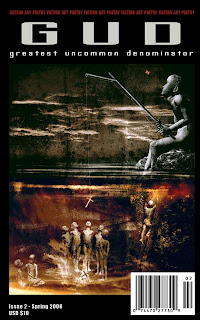
POET MARIAN KAPLUN SHAPIRO IS A PLAYER IN A DREAM
Did you ever wonder where dreams end and real life begins? Well, this equation is no problem for Marian Kaplun Shapiro, the author of the poetry collection: “Players in the Dream, Dreamers in the Play.” (Finishing Line Press 2007) Her poems flow effortlessly from dreams to real life from the tip of her worn pen.
Shapiro, who was born in the Bronx, NY in 1939, and has a Masters and Doctorate from Harvard University, was guest on my Somerville Community Access TV Show: “Poet to Poet: Writer to Writer”
The Bronx, according to Shapiro, was unlike our promised land of Somerville. Shapiro grew up in a large housing project that was conventional, stifling; and left little room for the imagination or creativity. The cosmopolitan atmosphere of Manhattan across the river was a welcomed escape for this young Bronx provincial.
Years later after leaving the Bronx, and heading to New England to Harvard, Shapiro became a practicing psychotherapist. She feels poetry and psychotherapy come from the same source. Shapiro reflected: “I pay a lot of attention to words—in my profession I have to listen closely to what people say.” In fact at Harvard Shapiro wrote her thesis that concerned short syllable words, and how they are infused with a great deal of emotional content. As Shapiro said “ The shorter the words the more feeling involved.” She continued: “ I think psychology and poetry connect with the primary part of one’s self.”
This poet describes herself as a Jewish Quaker. I asked about this unconventional combination. Shapiro smiled “ I never thought of Judaism as a religion. It was more of a culture to me. I call myself a Jewish Quaker because I don’t want anyone to think I was avoiding revealing my Jewish background.”
Growing up Jewish wasn’t a negative thing for Shapiro, it was, as she puts it “irrelevant” Sexism was a given in the religious life, and there was strong sentiment against interracial dating. “ I found these attitudes repulsive,” she said. She disliked all the talk about finding a nice “Jewish Boy”, and the negativism surrounding having a Puerto Rican boyfriend for instance.
Shapiro has only really started to publish her work in the last six or seven years. It just never occurred to her. One day she opened a now defunct journal “Sacred Fire,” and decided to submit her work. She was published and then it was off to the races.
In her collection “Players in the Dream…” she combines “actual” events with dreams. “Dreams and real life are highly integrated for me,” Shapiro said. While a Schizophrenic can’t differentiate between a dream and reality, Shapiro has no such trouble. But she definitely feels the overlap.
With all the talk of dreams I asked Shapiro if she was a Freudian or perhaps a Jungian. She smiled, and with her tongue firmly in her cheek, she replied, “I am a Marian.” And indeed she is.
--------------------------------------------------------------------------------
NAMING
Apple! He tastes the syllables
again, hearing red, green,
smelling sweet with sweet white juice.
Wordless, his one-year-old fingers
punctuate the air, towards
the refrigerator. Hah!
(There! In there!)
Wanderers in the Museum of
Antiquities we find ourselves attended
by the ancient Buddhas of Tibet,
by way of China. Gazing down they watch
kindly over us, the unenlightened.
We are tutored by the bodhisattvas,
humble heroes whose names we can't pronounce.
Gladly they waited here on earth, postponing
Nirvana for the sake of those who needed
them. For us. Patience beyond patience.
Blessing beyond blessing. Names beyond names.
In the beginning was the Word
And the Word,
infinite unspoken unspeakable
rises,
rises,
a transparent
helium
balloon
a
coda of
ethereal
echoes
just out of reach
disappearing
like fog at sunrise.
Truth?
or mirage?






































